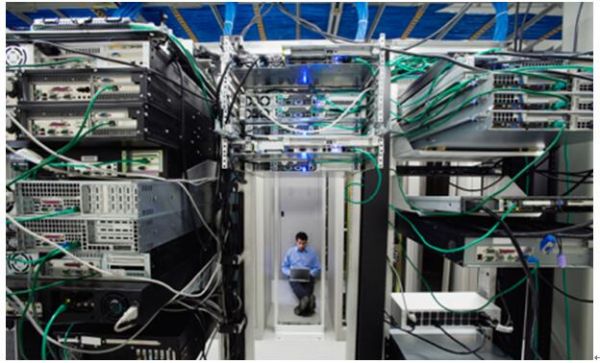Five strategies for saving data center space
Saving space in the data center can bring many benefits:
● Saving space means saving money. While reducing the space used, you can also reduce the power, water, lighting and cooling required, which can save money.
● While controlling the consumption of space, it can also ensure that there is enough space to meet the demand for future growth and expansion.
● The more space saved in the data center, the more space available to Carry out equipment inspection for convenient activities around the equipment.


We have summarized five measures that can save space and expenses after being implemented in the data center.
1. The fully equipped rack occupies a lot of floor space, so it is important to make full use of it. If you decommission the dormant server (otherwise, it will consume a lot of power without executing any job) and combine the servers that use less (otherwise, it will run at full power even when the utilization rate is only 5% or 10%), you will be able to combine the racks to save floor space. According to the data of the Uptime Institute, about 30% of the physical servers are actually sleeping. This means that there are $30 billion worth of IT equipment idle, without considering the operating costs of keeping these servers running. After the rack is fully filled, there is no need to worry about using the spare panel to cover the empty U space.
2. The high-density standard solution can further optimize the space to provide higher bandwidth after the high-density solution is deployed. For example, in a 1-U rack space, high-density patch panels can double the port density. In this way, density can be increased and technology changes can be made without the need to completely dismantle and replace existing infrastructure. High density solutions require fewer cabinets and fewer power distribution units (PDUs), so only small-scale fire detection and suppression systems are needed, and the length of telecommunications cabling and power feeders used is shorter. This can not only save space, but also further reduce operating costs.
Space can also be saved by using a series of products with the same floor area. All components work together well to save the required total U space.
3. The structure from bottom to top rather than from inside to outside expands the space in the vertical rather than horizontal direction, which helps to adapt to the growth demand and improve the capacity. While increasing the density, it will not occupy the floor space. A typical rack mounting solution provides 45 U of rack space. However, it is also feasible to obtain 48, 50, and 52 U rack space, so that a total of 14 inches of space can be added to meet the demand for vertical growth. Belden's rack mounted products can be used for the cable rack above the cabinet to provide additional vertical rack space.
Please seek non-traditional connection solutions, such as zero U solution, which can be completely set outside the rack and placed on the equipment installation rails. This allows valuable rack space to be used to install more active equipment.
4. The space saving cabling system with small diameter cables provides smaller wire diameters, making the rack space more used for equipment rather than cable management. The smaller size also means that cables are easier to manage. Even if the problem of cable congestion is not encountered now, small diameter cables can prevent this problem in the future.
5. The implementation of passive cooling CRAC cooling system sometimes fails to deal with the problems of high power density and high temperature caused by virtualization and blade servers. As a result, some data centers will use in column liquid cooling systems, but such systems will occupy a lot of valuable floor space that should be used for other purposes. By implementing a hot channel or cold channel closure strategy, more server racks can be installed in the existing space while maintaining an appropriate temperature.
Passive cooling can take many forms, using sealed rear doors and ventilation ducts to capture hot exhaust from the server. Then hot air is introduced into the return air duct of CRAC, where it is cooled and recirculated. This can provide higher computing power for the existing floor space.

